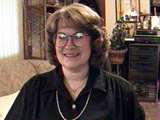 |
|
||
![Zonyx Report: Zetteler Prancing Red Stag Coat of Arms [Click for Text]](../GRAPHICS/ZettArms.JPG)
Zetteler Family Coat of Arms
|
|
|
|
|
Some Zettelers & Prasils smile for the lens c.1950: |
 Joanne & Pepito 1937 Joanne died in 2004, Santa Ana, CA  Janet (Joanne) Zetteler's grandfather John W. Zetteler fought in the Civil War. Author of Memorandum about his life[below]  [Buttons from Civil War Uniform]
Milwaukee Sept. 22nd 1865
My
name is Wynand John Zetteler. I was born in Holland and came
to this country with my parents when I was three years old. I
grew up to be a stout boy and learnt the shoemaking trade.
While I was to work at my trade the rebellion broke out. I
was 17 years old then so I and my brother, one year older
than myselve enlisted in Comp. C. 24th Regt. Wis. Vol. Inft. |
Joanne was a dancer who fell in love with a
Spanish clown her mother was dating. This was way back in
the 1920′s so the clown, Pepito, called upon his
pal Charlie Chaplin to have Joanne perform
in his film premier “Ballyhoo” @ the Mann Chinese Theater in
Hollywood. The invite was such an honor, Joanne’s mother
didn’t protest. The dancer played a wind-up doll alongside
Pepito and fell madly in love with him. The two
began a torrid love-affair that very day. Needing some
distance from her jilted mom, the teenage ballerina and her
clown beau settled in Orange County, a charming town an hour
south of LA.
|
|
|
{Destinations: US, Wisconsin, Milwaukee} |
|||
|---|---|---|---|
 
|
|||
Nostalgie de l'horizon,
The Zettelers: generations of travellers and entrepreneurs No needle has points at both ends. The truth expressed by this eastern saying is like a mirror held up to us by life. It confronts us with the ceaseless alternation of sunshine and adversity. A family tree is like a blueprint of that life where it has assumed specific form. The history of the Zettelers is rich in drama. For nine generations now a thread has been running, a pattern has developed whose elements are long-lived, even in many cases longer than life itself. The lines that we can trace back towards our eldest ancestors -- whether they called themselves Sitler, Van Zetteler or simply Zetteler -- undoubtedly extend even further, into the early Middle Ages. However, in our quest for these deepest roots we are thwarted by as yet insurmountable obstacles. It is up to the generations after us to try , with this genealogy in hand, to clear the path further back in time. We pick up the thread of our history in the United Netherlands halfway through the Seventeen Forties. No one had heard of Napoleon Bonaparte yet, but already the outline of the Batavian Republic was slowly becoming discernible. If one is prepared to overlook some of the facts about the true balance of power between Stadtholder William IV and the all-powerful States representing the population, the country might still, with some fantasy, be called a monarchy in those days. As far as our present knowledge goes it remains a mystery what made our German ancestor Friederich August Zetteler decide to try his fortune in our country. Born in Darmstadt (Hessen, Germany) around 1720, the then 20 years old Friederich Sitler, his German name at that time, set out on a westward trek. Most probably he went on foot, his knapsack full of strength and optimism. Whatever it was, the attraction of the United Netherlands in those days lay not in its sunny economic climate, for the chronicles speak of dire times, certainly for the common people, to which Friederich must have belonged. At the end we find him in Breda, where he changes his name into Zetteler and where in 1749 he marries 30-year old Willemina Streuyck from Werkendam. Their marriage starts at a time when William IV tries, unsuccessfully, to break the traditional power of the ruling class and of the all-powerful States. It is a time in which the well-to-do heartlessly enrich themselves while "the common working people live in misery and sorrow while the homes for the poor are packed full." The long years of wars the Netherlands had to fight against well-nigh each of the neighbouring countries and in which the national resources were constantly threatened with exhaustion, must have been grueling, also for Friederich. A common phrase in those years was: "The States without resolve, the people without work, offices without number, selling without sanctions, burdens without end -- and every man without hope!" But Friederich must have been a real fighter, a man who didn't easily give up. Although his profession is not known, our ancestor could surely boast an enterprising spirit. As family history develops and the family tree grows two major branches, that spirit will become more and more evident. But whatever his achievements during his life in our country, a great fortune was not among them. This must be the conclusion from the registration of his decease at the age of 80 in The Hague, on July 1801, and that of his wife Willemina fourteen years before, both by legal counsel paid from public funds. Crystal Clear For lack of crystal clear proof, this genealogy takes as its point of departure that the Zettelers, with Friederich August as first known ancestor and figurehead, came to the Netherlands from the East. The author of the commemorative volume issued at the occasion of the 125th anniversary of the firm Molyn & Co. of Rotterdam, manufacturers of lacquers, varnishes and paints, may have been overstretching his fantasy a little when he had the Zettelers come to our country from Scotland, without either offering hard proof or quoting reliable sources for this; with this, we prefer to leave that statement as it is. It should be added that the said author is right when he characterizes the Zettelers as enterprising, eager travellers. With subtle understatement, he notes that the Zettelers "have always been driven by nostalgie de I'horizon." It may well be said that this suited the Molyns, the founders of the Rotterdam-based company, extremely well. The Zettelers' nostalgia proved to be most fruitful, particularly in the geographically mobile and representative segments of the company. It is not without reason that our coat of arms shows a proud, nervously bristling stag with impressive antlers. The animal is all thirst for action, eagerness to undertake, drive to discover. To me the image seems to convey a sense of initiative, as a common trait of the Zettelers. This does not mean, however, that they were invariably successful. Indeed, as family history shows, they weren't. The commemorative volume on the Molyn company history does not mention our family in a cursory way, or in passing, as it were. Willem Frederik Zetteler, born in Rotterdam in 1820, makes his career in the company all the way up from modest travel assistant to director. His son Willem Frederik Jr., born in 1860 and identified by the numeral II in the company's records, continues along the lines laid out by his father. In 1895 he becomes senior partner and director, continuing to lead the company until 1918. Eagerness to Travel Eagerness to travel and entrepreneurial drive, therefore, are two continuous threads woven into our family history. In nautical history, too, the family made their contribution, albeit that the toll was high. Before we set out to recount this voyage, though, we must make another excursion and explain why during a certain period the name Zetteler was dropped in favour of the French name De Bourghelles. The explanation why that name came into use is, in fact, quite plausible. The name first occurs in our genealogy in 1790, when the third child of our ancestor Friederich August and his wife Willemina, their son Frederik Tobias, marries Anna Judina de Bourghelles de la Vacquerie, from Waalwijk. She may have come from a Huguenot family. Although people usually married within their own circles, this was not always the case, of course. This is also true of the marriage of Frederik Tobias and Anna Judina. Her distinguished name tickled the imagination of one of Frederik Tobias' sons, Wijnand Johannes, who decided to add "De Bourghelles" to his name, putting it in front of his own family name. For a shopkeeper trading in drapery, first in Vlissingen (Flushing) and later in Rotterdam, this must have been quite impressive, especially in a time when it was the French who were calling the shots in the United Netherlands. An additional, but by no means unimportant, reason may have been that a French name such as that could have a favourable effect on the attitude of the French authorities. Because the family counted many small businessmen, tailors, drapers and suchlike among its members, a French name meant a measure of safety and was considered an asset.
Towards the end of the
eighteenth century the Seven United Dutch
Provinces
had to face another French invasion, the beginning of
two decades of French rule that was to leave Napoleon Bonaparte's indelible mark upon
the country. The creation of a strict and
well-organized Registry of BDM [Bureau of Deaths &
Marriages]
put an end
to the existing chaotic practices with regard to family
names.
|
![Zonyx Report Map: Wisconsin Region [Click for Info]](../GRAPHICS/WisWhere.GIF)
Above: Wisconsin, where first Zettelers (Frederik Tobias & the former Anna Jacoba Smith of Vlissingen) settled in Milwaukee, in 1848. Brother of Charles G.E. Zetteler, who followed (with wife Anna); uncle of Charles G.E. Zetteler [above right.]
Below: Wisconsin farm girl in traditional
garb used
mention of my mother's ancestors. Shown here is her grandfather, PeterMickle [also top of page], her 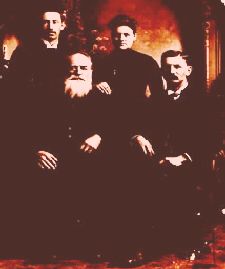 father, Scudder
father, Scudder
Mickle (1870-1944) [standing], his daughter Madge (1872-1957), & son Charles. Her mother, Alvina (1884-1925), died when she was four. She was a Stroschine (Stroschein), born in Germany. Scudder was a cheesemaker in Gotham, Wisconsin, where my mother was born near Taliesin, the Spring Green home of Frank Lloyd Wright.
Below:
Mike Zetteler, Alice
(Mickle) Zetteler & Fred
Above:
Alice
Mickle, about 1937, when she lived with
Right: Alice Kingsley,
shortly before entering nursing
Below: Beloved
family pet, Blackie Zetteler, after a hard
Below: Alice
(Mickle) Zetteler Kingsley & second
Below:+ Milwaukee & Great Lakes
Region.
Below:
Milwaukee with Flemish Renaissance City Hall
Below: Milwaukee's Lower East
Side.
|
||
|
After Frederik Tobias, the son of our oldest
ancestor, who started a business
in drapery in Rotterdam, there comes a basic division in the genealogy. From Frederik Tobias onward, the trunk splits up into two major branches, which we shall refer to as Branch A and Branch B. In all, Frederik and Anna Judina had six children. One child was stillborn, while a son, Frederik August, born in 1794, only lived for a month. But two other sons, Wijnand Johannes (1791) and Willem Frederik (1797), both drapers like their father, were the progenitors of two family branches that were blessed with many children. Today, in 1998, we see a numerous ninth generation. Both branches are characterized by the pronounced nostalgic de I'horizon that we have seen before, the yearning to explore unknown countries and new worlds. In Branch B this resulted from reasons of commerce or trade, while in Branch A it was often inspired by a love for the sea.
Two of
Wijnand Johannes' sons (Branch A) set out to sea to
become captains in the merchant fleet. They were Wijnand Johannes
Bourghelles Zetteler (1823-1901) and his younger brother
Jan
David Peters Zetteler (1831-1876). The latter, who
died in Probolingo
(East Java)
at the early age of 45, was shipwrecked off Cape of Good Hope in 1866 with his barque Johannes.
|
![Zonyx Report Photo: Brady Street Toys [Click for Photo Site]](../GRAPHICS/BradBike.JPG)
Above: Brady Street after 1998 rally featuring Harley-Davidson motorcycles, a famous local product, looking east toward Lake Michigan. Former heart of counterculture, still hip & now gentrifying rapidly.
Below:
Another view of Brady
Street, looking
|
||

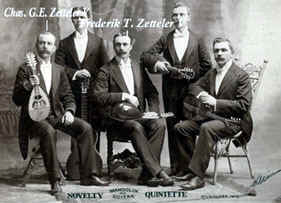 Mandolin &
Guitar Novelty Band
Mandolin &
Guitar Novelty Band

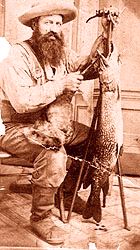






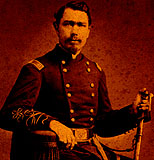
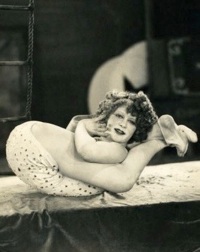
![Zonyx Report Map: St. Lawrence Seaway [Click for Web Site]](../GRAPHICS/Seaway_2.GIF)



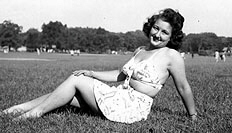

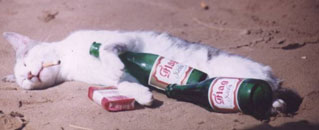
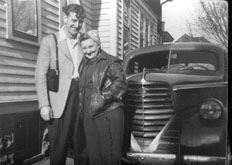 The photo shows
The photo shows

![Zonyx Report Map: Milwaukee & Great Lakes [Click for Port Info]](../GRAPHICS/Lake_Map.GIF)
![Zonyx Report Todd Elert Photo: Milwaukee & Lake Michigan [Click for More Photos]](../GRAPHICS/MilwAir2.JPG)
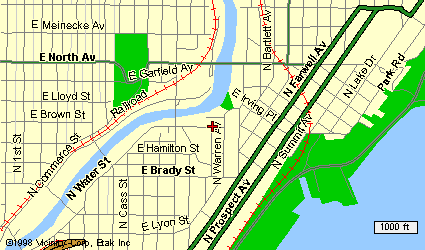
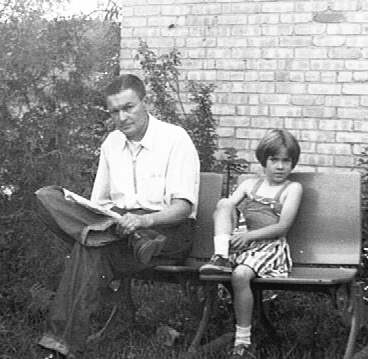 Another
view
Another
view![Zonyx Report Photo from Milwaukee Magazine: View of Brady St. [Click for Magazine Site]](../GRAPHICS/BradyVue.JPG)





 Netherlands, settlement of the Dutch branch of
the Zettelers O>>>>
Netherlands, settlement of the Dutch branch of
the Zettelers O>>>>


